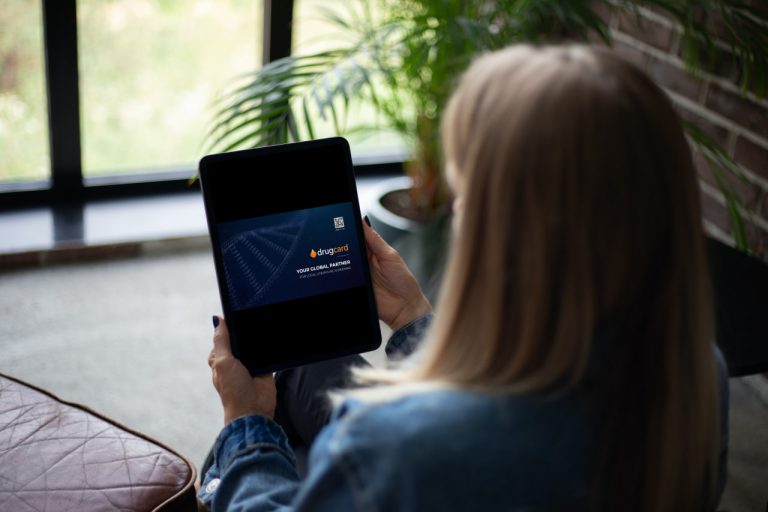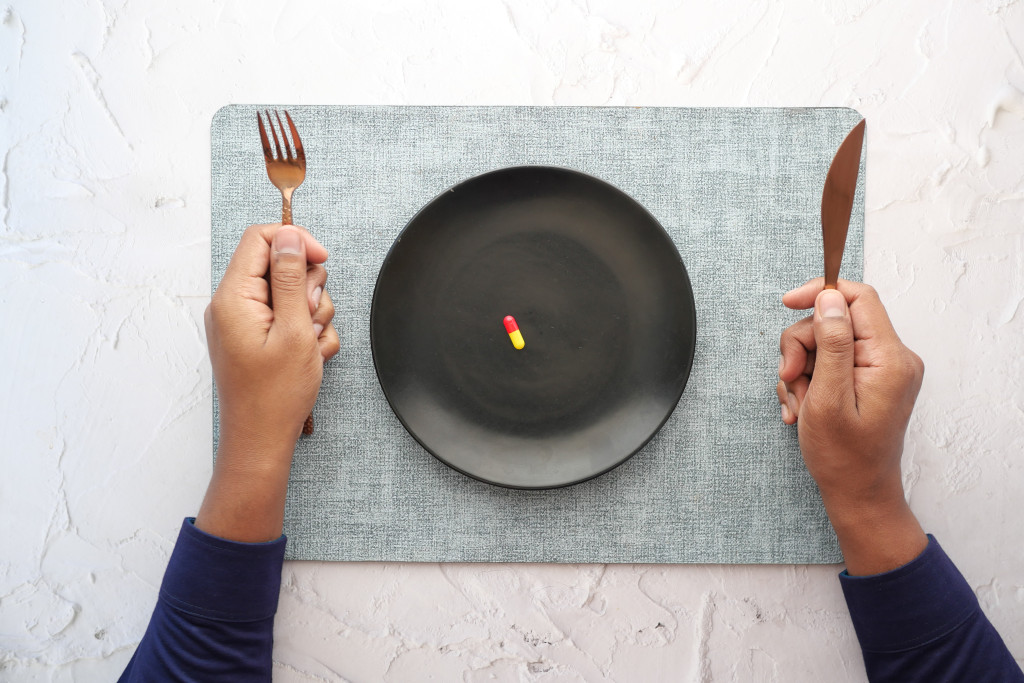Customer use case. How Pharma companies improve MLM process
- 16/09/2022
Pharmacovigilance, being related to drug safety, is one of the key processes for any pharmaceutical company. Good pharmacovigilance practices (GVP) guidelines and legal requirements strictly regulate all pharmacovigilance activities. Drug manufacturers must constantly monitor scientific publications in specialized medical journals to obtain information on the safety and effectiveness of the registered drug use, both globally and locally. For more than two years, the Ukrainian pharmaceutical market has operated under the COVID-19 pandemic conditions, and for the last six months under the conditions of a full-scale war with russian federation. Vladyslav Vesna, Head of Signal and Risk assessment Team / Pharmacovigilance department at JSC Farmak, tells how the Ukrainian pharmaceutical market leader in cooperation with the DrugCards OÜ provides the process of literature monitoring.
Beginning of Cooperation with DrugCards OÜ
The DrugCards OÜ has been helping Farmak to ensure continuity and automation of literature sources monitoring for a year and a half. The electronic pharmacovigilance platform DrugCard conducts automated literature screening. Not only of web pages, but also of PDF files (including scanned), DOC/DOCX text files, and even images in local medical and scientific journals. This way the platform fully meets the needs of monitoring for our company. In my opinion, it is the automation and development of technologies that are the future of pharmacovigilance. It will reduce the expenses of time, and resources. Pharmacovigilance specialists can devote more time and attention to clinical issues.
Literature monitoring set-up process and entering keywords for each of our drugs, as well as personalization of platform settings for the user, was very fast and creative. It’s worth noting that during the implementation of the DrugCards OÜ project at Farmak there were severe COVID-19 restrictions worldwide. That is why all processes were started and configured remotely.
Implementation of Literature Monitoring Wishes
From the beginning of our cooperation, the DrugCards OÜ specialists implemented our recommendations and proposals in every new platform release. Such as searching for a drug by a trade name in the module “Literature” or a publication filter by the date of drug registration.
New literature sources from around the world, where our drugs are being marketed, were added to the database within 3-4 working days. Some of these sources were quite difficult to add because of the technical features of the publication itself. For example, when articles were published in the animated page-flipping format.
Regulatory Requirements Implementation in DrugCard
There is no need to worry about the results of the pharmacovigilance system audit. The audit trail tool is introduced in the DrugCard to ensure the requirements of GMP Annex 11 guidelines and GAMP 5 recommendations. It has a history of records, which contain evidence of data changes resulting from user actions. Audit tracking data is not subject to change or deletion, so you can always review authorization, profile editing, drugs and keywords change, and other critical system events.
The platform can be used from any device – a computer, a tablet or a smartphone in mode 24/7, regardless of the operating system installed. It is very convenient to access all safety information even from your smartphone, especially when you are on business trips.
The simplicity of Adding New Literature Sources
It was nice to see how the DrugCard implemented our common ideas and proposals in every new version. The number of scientific and medical literature that pharmaceutical companies should monitor every year is increasing. No wonder new relevant sources of literature monitoring are constantly being added. The list of sources monitored by the DrugCard contains specialized medical literature from Ukraine, and CIS countries, as well as sites of local and world regulatory authorities (EMA, WHO, FDA, MHRA, TGA, etc.). This shows that Farmak has an integrated literature monitoring system in the respective markets, where our products are registered. It is necessary to consider that each separate pharma market can have its peculiarities and requirements to the list of sources for screening. For example, in Ukraine, the State Expert Center published a list of recommended sources for literature monitoring. However, this list is not exhaustive and contains medical journals that are irrelevant or no longer published. The DrugCards OÜ team, in its turn, sends us monthly an up-to-date list of sources monitored by the platform indicating all changes.
Cooperation with DrugCards OÜ in COVID-19 Conditions
New safety data, and new drug use information during the COVID-19 pandemic appeared almost daily. Doctors comprehensively approached the treatment of coronavirus infection and its consequences, especially in severe cases. Therefore, lots of publications on various consequences of drug interactions and new unwanted therapeutic effects appeared. Received safety data on off-label drug use during the rapid onset of the pandemic gave us new knowledge even about their use for approved indications. For example, hydroxychloroquine is approved in the EU for the treatment of certain autoimmune diseases such as rheumatoid arthritis and systemic lupus erythematosus, as well as for the prevention and treatment of malaria. Hydroxychloroquine was widely off-label prescribed against coronavirus infection. Until it showed no favourable effect in the COVID-19 treatment in large, randomized clinical trials. But a lot of indisputable data confirms the link between the use of this drug and the risk of mental disorders and the suicide behaviour of patients. Since hydroxychloroquine was often used in patients with antibacterial therapy, new evidence of concomitant use risks emerged. In patients with rheumatoid arthritis concomitant use of azithromycin and hydroxychloroquine is associated with an increased risk of cardiovascular events and cardiovascular mortality. The Medicines and Healthcare products Regulatory Agency (MHRA) recently reminded medical professionals about such risks.
Cooperation with DrugCards OÜ in Conditions of Full-Scale War with russia
Our lives have changed since the COVID-19 pandemic outbreak. It seemed that we had already won the fight against this terrible disease, which has taken away more than 110 thousand lives of Ukrainians. There seemed to be only offline meetings, planning and improving all working processes ahead.
But on February 24, 2022, life changed completely, when the russian federation launched a full-scale war against Ukraine, attacking peaceful cities in all regions of Ukraine. In the first minutes of the war, there was a shock. It ended up in the understanding that everyone should do everything on their behalf for the Victory of our country. For Farmak, providing consumers with high-quality, effective and safe drugs has always been a key priority. Therefore, it was important to continue all obligations fulfilment, including ensuring the pharmacovigilance process as well. The principle of business continuity is very important in pharmacovigilance and it must be followed in all critical processes, including literature monitoring.
Pharmacovigilance Processes Set-up in Wartime
From the first days of the war, we agreed with Dmytro, CEO of DrugCards OÜ, on free access to the platform for the time of active military actions. And we reached this agreement, not by long-term e-mail or long-term telephone negotiations. We did it in a couple of minutes in a usual messenger. It is impressive because war is always force-majeure for any kind of activity. I even kept the screenshot of our correspondence with Dmytro, because we were sure of our victory.
Subsequently, during the war period, the DrugCards OÜ offered Ukrainian MAHs free of charge use of the DrugCard platform as part of the pharmacovigilance continuity ensuring strategy.
Pharmacovigilance Guards Patients’ Safety in Wartime
With the war outbreak, we work in a new reality. The pharmacovigilance processes have changed a bit, but literature monitoring one remained the same. Thanks to the constant DrugCard platform notification, we have not missed any drug safety issues. Here are some examples.
Metformin Use Safety During Pregnancy
Everyone knows about metformin, the drug used in type 2 diabetes therapy. During the pregnancy of diabetic patients, doctors recommended using insulin to keep blood glucose levels as close as possible to the norm, to reduce the risk of developing fetal defects. But this was before the publication of the MHRA regulator’s recommendation. It reported that a large non-intervention cohort study did not reveal any safety problems related to metformin use during pregnancy. And now the summary of product characteristics of metformin will be updated to allow its use during pregnancy and in the periconceptional phase, as an addition or alternative to insulin, if clinically necessary. The DrugCard notified us about these MHRA recommendations the next day after their publication.
Contrast Agents Safety
Another example concerns iodine-containing contrast agents, which are extremely important for contrast during computer tomography. On March 31, the FDA Centre for Drug Evaluation and Research (CDER) published recommendations on monitoring the thyroid gland function in infants and young children who receive iodine-containing contrast agent injections for medical visualization. And already on April 2, we received reports from the DrugCard platform on these FDA recommendations. For us, this information confirms that the recommendations given in the leaflets for our contrast agents comply with all clinical guidelines for safe drug use.
Interesting ADR Cases
Literature monitoring also revealed several reports of rare ADRs, published in the EU medical journals, which were recently added to the DrugCard. For example, the case of a symmetrical drug-related intertriginous and flexural exanthema (SDRIFE) (also called “baboon syndrome”) developed after the combined antibacterial drug cotrimoxazole use. Or the case of insulin-induced oedema. These journals also uncovered interesting off-label drug use cases for therapeutic purposes. For example, sildenafil was used to treat diseases associated with non-scarring alopecia, considering its potentially beneficial therapeutic effect due to increased hair follicles oxidation. By the way, an approved indication of sildenafil results from the “interesting” adverse reaction revealed during the clinical trial. All these cases were not related to the use of our registered medicinal products, but we will reflect the information from the articles in certain sections of one of the main documents on pharmacovigilance – the periodic safety update report (PSUR).
New Safety Information in the Instructions for Medical Use
Also during the war, we did not miss any recommendation to amend the drug instructions published on the websites of regulatory authorities of Ukraine, the European Union, the United States and other agencies. Continuous monitoring of sources and quick information received from the automated pharmacovigilance platform DrugCard ensured it.
Plans after our Victory!
What will happen next? Now every citizen of our country asks this question. I am sure of our Victory over the enemy. Reconstruction of all destruction and rapid development of the Ukrainian economy. And from the DugCards OÜ we expect an important update of the DugCard platform. They announced it in early August. This will be keywords “highlighting” in articles, which will significantly improve the process.
Vladyslav Vesna,
Head of Signal and Risk assessment Team / Pharmacovigilance department at JSC Farmak




